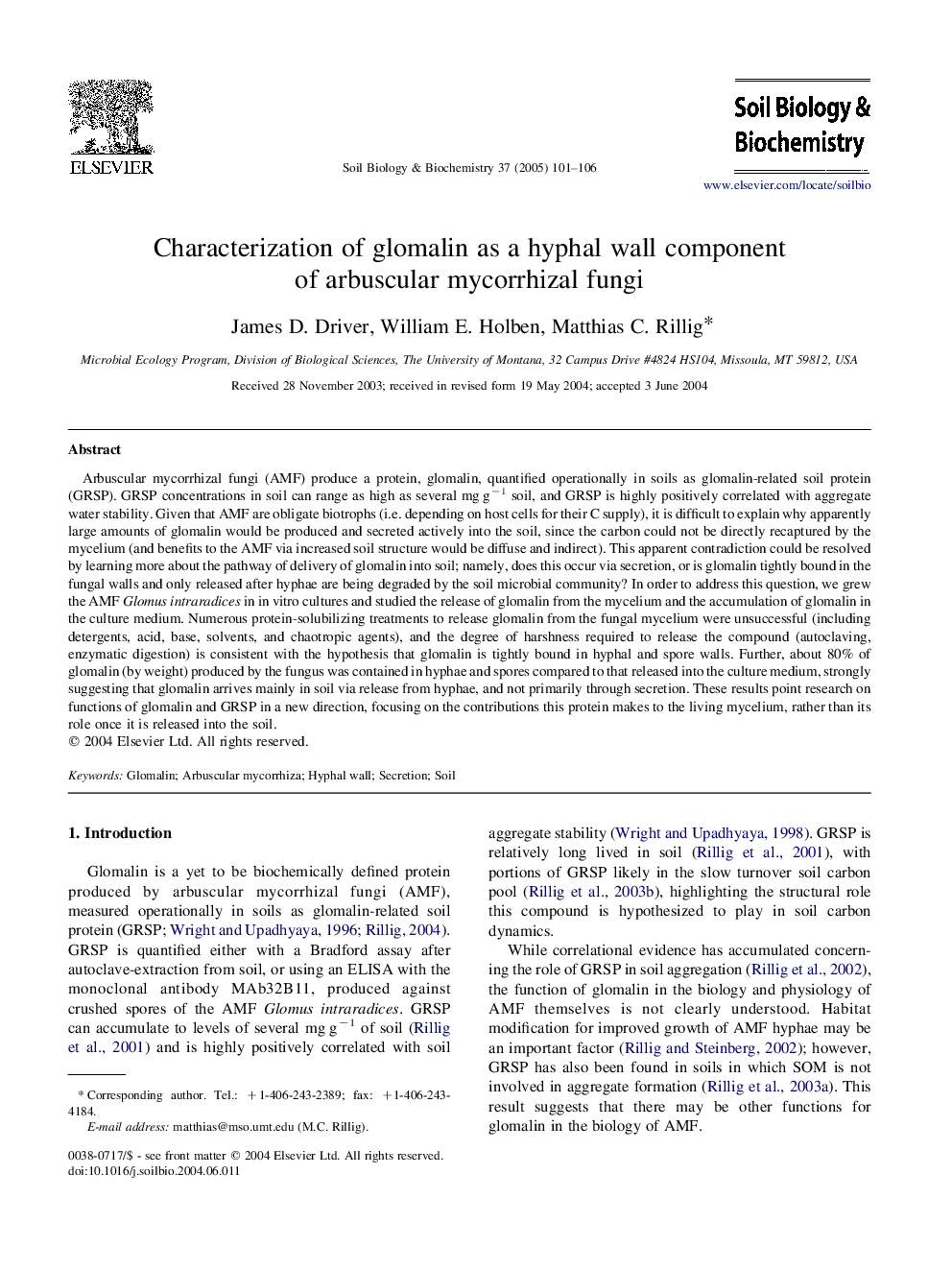| Article ID | Journal | Published Year | Pages | File Type |
|---|---|---|---|---|
| 10846432 | Soil Biology and Biochemistry | 2005 | 6 Pages |
Abstract
Arbuscular mycorrhizal fungi (AMF) produce a protein, glomalin, quantified operationally in soils as glomalin-related soil protein (GRSP). GRSP concentrations in soil can range as high as several mg gâ1 soil, and GRSP is highly positively correlated with aggregate water stability. Given that AMF are obligate biotrophs (i.e. depending on host cells for their C supply), it is difficult to explain why apparently large amounts of glomalin would be produced and secreted actively into the soil, since the carbon could not be directly recaptured by the mycelium (and benefits to the AMF via increased soil structure would be diffuse and indirect). This apparent contradiction could be resolved by learning more about the pathway of delivery of glomalin into soil; namely, does this occur via secretion, or is glomalin tightly bound in the fungal walls and only released after hyphae are being degraded by the soil microbial community? In order to address this question, we grew the AMF Glomus intraradices in in vitro cultures and studied the release of glomalin from the mycelium and the accumulation of glomalin in the culture medium. Numerous protein-solubilizing treatments to release glomalin from the fungal mycelium were unsuccessful (including detergents, acid, base, solvents, and chaotropic agents), and the degree of harshness required to release the compound (autoclaving, enzymatic digestion) is consistent with the hypothesis that glomalin is tightly bound in hyphal and spore walls. Further, about 80% of glomalin (by weight) produced by the fungus was contained in hyphae and spores compared to that released into the culture medium, strongly suggesting that glomalin arrives mainly in soil via release from hyphae, and not primarily through secretion. These results point research on functions of glomalin and GRSP in a new direction, focusing on the contributions this protein makes to the living mycelium, rather than its role once it is released into the soil.
Related Topics
Life Sciences
Agricultural and Biological Sciences
Soil Science
Authors
James D. Driver, William E. Holben, Matthias C. Rillig,
